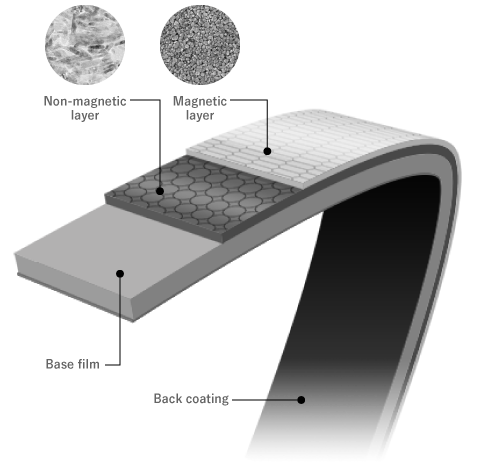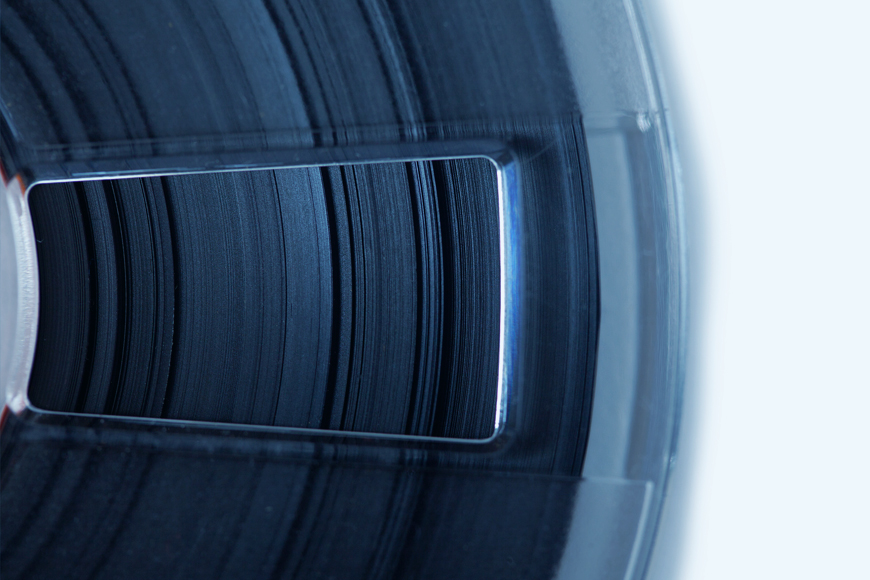The recording capacity of magnetic tape is determined by its recording area multiplied by its areal recording density. Compared to HDDs whose recording size (density) has almost reached the physical limit, the recording density of magnetic tape is still low and has room to expand. Practical technologies that enhance reliability and operating durability while increasing the recording area by making the tape thinner and longer are also evolving with each generation. Magnetic tape is still evolving, with the aim of achieving a higher capacity.
Footsteps of Technical Innovations for Increased Capacity
The figure on the right shows the structure of magnetic tape. Manufacturers have continuously innovated technologies to achieve a thinner magnetic tape, a smaller magnetic particle, and a higher capacity.
● Size of a magnetic particle


● Ten times thinner magnetic layer achieves
ten times higher recording density
(Comparison to the past)

Fujifilm
Nanocubic Technology
● Magnetic particles technology
that achieves higher capacity

Fujifilm
Barium Ferrite Technology
Capacity That Is Still Expanding
In 2015, tape media makers publicly demonstrated the magnetic tape technology that enables recording of 123 Gbpsi data on the barium ferrite(BaFe)applied tape (equivalent to 220 TB per cartridge) in anticipation of its mass production.
Video of 220 TB Tape Demonstration (IBM research)
The demonstration of the 220 TB tape was achieved with IBM's drive technologies and Fujifilm's tape media technologies. This video describes the key technologies for the innovation of tape technologies.

